Non-Cooperative Spacecraft Pose Measurement with Binocular Camera and TOF Camera Collaboration
Abstract
1. Introduction
2. Problem Definition
3. Detailed Description of the Proposed Method
3.1. System Joint Calibration
3.2. Binocular Initial Pose Acquisition
3.2.1. Feature Point Association
3.2.2. Relative Motion Calculation
- (a)
- For the first frame, the feature point extraction is performed in the left and right images. A set of feature point pairs is obtained through brute force matching and the epipolar constraint criterion between the left and right cameras. Its three-dimensional coordinates in the left camera coordinate system are calculated through the principle of triangulation.
- (b)
- For a non-first frame, the number of feature points will decrease if the optical flow tracking time is too long. If the number of feature points tracked in the current frame is less than threshold (since perspective-n-point problems require at least 3 sets of points, the threshold should be greater than 3, which was set as 6 in this manuscript), then this frame adopts the method of the first frame to add new feature points. After obtaining the 3D set in the left camera coordinate system of the previous frame and the 2D feature point set of the left image in this frame, the rotation matrix and translation vector are solved quickly based on the random sample consensus (RANSAC) [27] method.
- (c)
- Since the surface of a non-cooperative spacecraft has multilayer reflective materials, the texture information is relatively lacking, which leads to the appearance of outliers in the binocular measurement process. A Kalman filter model [28] was introduced to eliminate the outliers and ensure the stability of the system in this paper.
3.3. Point Cloud Tracking and Pose Optimization
3.3.1. Initial Value Calculation in the Point Cloud Coordinate System
3.3.2. Frame-to Frame Point Cloud Registration
- (a)
- Down-sampling the source point cloud using a voxel filter;
- (b)
- Using the initial pose obtained by vision to perform the initial transformation on the source point cloud and accomplishing a rough registration of the point cloud;
- (c)
- The K-dimensional tree is used to accelerate the search for point pairs between the source point cloud and the target point cloud when using the nearest neighbor to search for the corresponding points;
- (d)
- It is judged whether the points belong to the same SURF-3D key point area when using the minimum value of the Euclidean distance to determine a point pair; the false matching phenomenon is rejected.
- (e)
- The convergence condition is that the sum of the distance between the matched points is less than a given threshold or greater than the preset maximum number of iterations.
3.3.3. Pose Determination
4. Experiment and Analysis
4.1. Numerical Simulation
4.2. Semi-Physical Experiments
4.2.1. Ground Verification System
4.2.2. Pose Measurement Experiment
Rotation Experiment at Low Speed
Rotation Experiment at High Speed
Key Frames Threshold Selection Experiment
Calculation Time Comparison of Initial Value Acquisition Methods
5. Conclusions
Author Contributions
Funding
Institutional Review Board Statement
Informed Consent Statement
Data Availability Statement
Conflicts of Interest
References
- Takeichi, N.; Tachibana, N. A tethered plate satellite as a sweeper of small space debris. Acta Astronaut. 2021, 189, 429–436. [Google Scholar] [CrossRef]
- Muntoni, G.; Montisci, G.; Pisanu, T.; Andronico, P.; Valente, G. Crowded Space: A Review on Radar Measurements for Space Debris Monitoring and Tracking. Appl. Sci. 2021, 11, 1364. [Google Scholar] [CrossRef]
- Razzaghi, P.; Al Khatib, E.; Bakhtiari, S.; Hurmuzlu, Y. Real time control of tethered satellite systems to de-orbit space debris. Aerosp. Sci. Technol. 2021, 109, 106379. [Google Scholar] [CrossRef]
- Mark, C.P.; Kamath, S. Review of active space debris removal methods. Space Policy 2019, 47, 194–206. [Google Scholar] [CrossRef]
- Liu, J.; Tong, Y.; Liu, Y.; Liu, Y. Development of a novel end-effector for an on-orbit robotic refueling mission. IEEE Access. 2020, 8, 17762–17778. [Google Scholar] [CrossRef]
- Li, W.; Cheng, D.; Liu, X.; Wang, Y.; Shi, W.; Tang, Z.; Gao, F.; Zeng, F.; Chai, H.; Luo, W.; et al. On-orbit service (OOS) of spacecraft: A review of engineering developments. Prog. Aerosp. Sci. 2019, 108, 32–120. [Google Scholar] [CrossRef]
- Moghaddam, B.M.; Chhabra, R. On the guidance, navigation and control of in-orbit space robotic missions: A survey and prospective vision. Acta Astronaut. 2021, 184, 70–100. [Google Scholar]
- Luu, M.A.; Hastings, D.E. On-Orbit Servicing System Architectures for Proliferated Low-Earth-Orbit Constellations. J. Spacecr. Rocket. 2022, 59, 1946–1965. [Google Scholar] [CrossRef]
- Oestreich, C.; Espinoza, A.T.; Todd, J.; Albee, K.; Linares, R. On-Orbit Inspection of an Unknown, Tumbling Target Using NASA’s Astrobee Robotic Free-Flyers. In Proceedings of the IEEE/CVF Conference on Computer Vision and Pattern Recognition, Nashville, TN, USA, 20–25 June 2021; pp. 2039–2047. [Google Scholar]
- Huang, X.; Li, M.; Wang, X.; Hu, J.; Zhao, Y.; Guo, M.; Xu, C.; Liu, W.; Wang, Y.; Hao, C.; et al. The Tianwen-1 guidance, navigation, and control for Mars entry, descent, and landing. Space Sci.Technol. 2021, 2021, 9846185. [Google Scholar]
- Zhao, G.; Xu, S.; Bo, Y. LiDAR-based non-cooperative tumbling spacecraft pose tracking by fusing depth maps and point clouds. Sensors 2018, 18, 3432. [Google Scholar] [CrossRef]
- Hu, Q.; Jiang, C. Relative Stereovision-Based Navigation for Noncooperative Spacecraft via Feature Extraction. IEEE/ASME Trans. Mechatron. 2022, 27, 2942–2952. [Google Scholar] [CrossRef]
- Zhang, L.; Zhu, F.; Hao, Y.; Pan, W. Rectangular-structure-based pose estimation method for non-cooperative rendezvous. Appl. Opt. 2018, 57, 6164–6173. [Google Scholar] [CrossRef] [PubMed]
- Peng, J.; Xu, W.; Liang, B.; Wu, A. Virtual stereovision pose measurement of noncooperative space targets for a dual-arm space robot. IEEE Trans. Instrum. Meas. 2019, 69, 76–88. [Google Scholar] [CrossRef]
- Li, Y.; Jia, Y. Stereovision-based Relative Motion Estimation Between Non-cooperative spacecraft. In Proceedings of the 2019 Chinese Control Conference (CCC), Guangzhou, China, 27–30 July 2019; pp. 4196–4201. [Google Scholar]
- Liu, L.; Zhao, G.; Bo, Y. Point cloud based relative pose estimation of a satellite in close range. Sensors 2016, 16, 824. [Google Scholar] [CrossRef] [PubMed]
- Opromolla, R.; Fasano, G.; Rufino, G.; Grassi, M. Pose estimation for spacecraft relative navigation using model-based algorithms. IEEE Trans. Aerosp. Electron. Syst. 2017, 53, 431–447. [Google Scholar] [CrossRef]
- Guo, W.; Hu, W.; Liu, C.; Lu, T. Pose initialization of uncooperative spacecraft by template matching with sparse point cloud. J. Guid. Control Dyn. 2021, 44, 1707–1720. [Google Scholar] [CrossRef]
- Terui, F.; Kamimura, H.; Nishida, S. Motion estimation to a failed satellite on orbit using stereo vision and 3D model matching. In Proceedings of the 2006 9th International Conference on Controll, Automation, Robotics and Vision, Singapore, 5–8 December 2006; pp. 1–8. [Google Scholar]
- Peng, J.; Xu, W.; Liang, B.; Wu, A. Pose measurement and motion estimation of space non-cooperative targets based on laser radar and stereo-vision fusion. IEEE Sens. J. 2018, 19, 3008–3019. [Google Scholar] [CrossRef]
- Guo, P.; Zhang, Y.; Hu, Q. Pose Measurement of Non-cooperative Spacecraft by Sensors Fusion. In Proceedings of the 2022 41st Chinese Control Conference (CCC), Hefei, China, 25–27 July 2022; pp. 3426–3431. [Google Scholar]
- Liu, Z.; Liu, H.; Zhu, Z.; Song, J. Relative pose estimation of uncooperative spacecraft using 2D–3D line correspondences. Appl. Opt. 2021, 60, 6479–6486. [Google Scholar] [CrossRef]
- Su, Y.; Zhang, Z.; Wang, Y.; Yuan, M. Accurate Pose Tracking for Uncooperative Targets via Data Fusion of Laser Scanner and Optical Camera. J. Astronaut. Sci. 2022, 1–19. [Google Scholar]
- Sun, D.; Hu, L.; Duan, H.; Pei, H. Relative Pose Estimation of Non-Cooperative Space Targets Using a TOF Camera. Remote Sens. 2022, 14, 6100. [Google Scholar] [CrossRef]
- Vidmar, A.; Brilly, M.; Sapač, K.; Kryžanowski, A. Efficient Calibration of a Conceptual Hydrological Model Based on the Enhanced Gauss–Levenberg–Marquardt Procedure. Appl. Sci. 2020, 10, 3841. [Google Scholar] [CrossRef]
- Zhang, G.; Qin, D.; Yang, J.; Yan, M.; Tang, H.; Bie, H.; Ma, L. UAV Low-Altitude Aerial Image Stitching Based on Semantic Segmentation and ORB Algorithm for Urban Traffic. Remote Sens. 2022, 14, 6013. [Google Scholar] [CrossRef]
- Fischler, M.A.; Bolles, R.C. Random sample consensus: A paradigm for model fitting with applications to image analysis and automated cartography. Commun. ACM 1981, 24, 381–395. [Google Scholar] [CrossRef]
- Urrea, C.; Agramonte, R. Kalman filter: Historical overview and review of its use in robotics 60 years after its creation. J. Sensors 2021, 2021, 9674015. [Google Scholar] [CrossRef]
- Wang, Q.; Cai, G. Pose estimation of a fast tumbling space noncooperative target using the time-of-flight camera. Proc. Inst. Mech. Eng. Part G J. Aerosp. Eng. 2021, 235, 2529–2546. [Google Scholar] [CrossRef]
- Agarwal, S.; Mierle, K. Ceres solver: Tutorial & reference. Google Inc. 2012, 2, 8. [Google Scholar]
- Rusu, R.B.; Blodow, N.; Beetz, M. Fast point feature histograms (FPFH) for 3D registration. In Proceedings of the 2009 IEEE international conference on robotics and automation, Kobe, Japan, 12–17 May 2009; pp. 3212–3217. [Google Scholar]

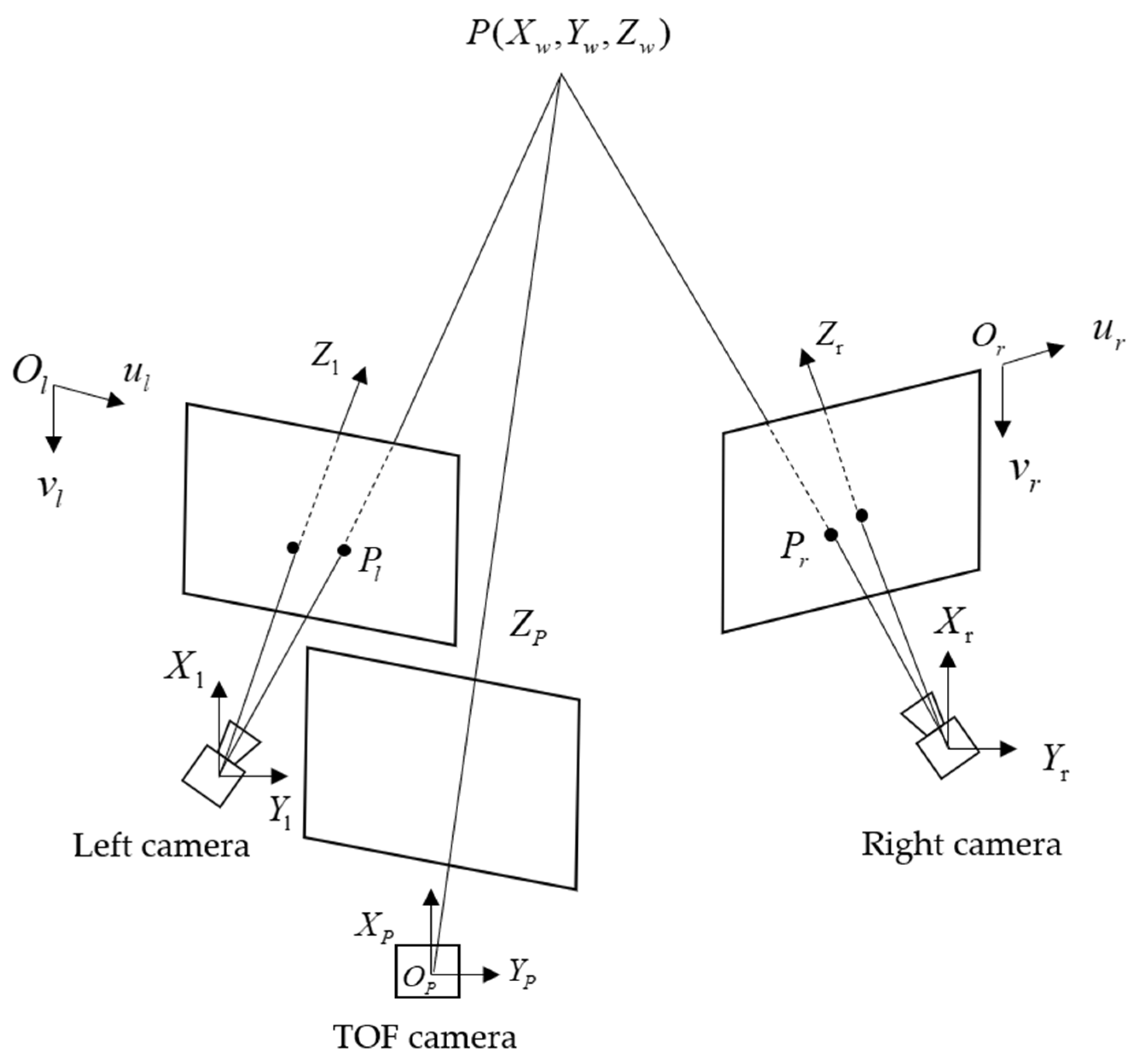

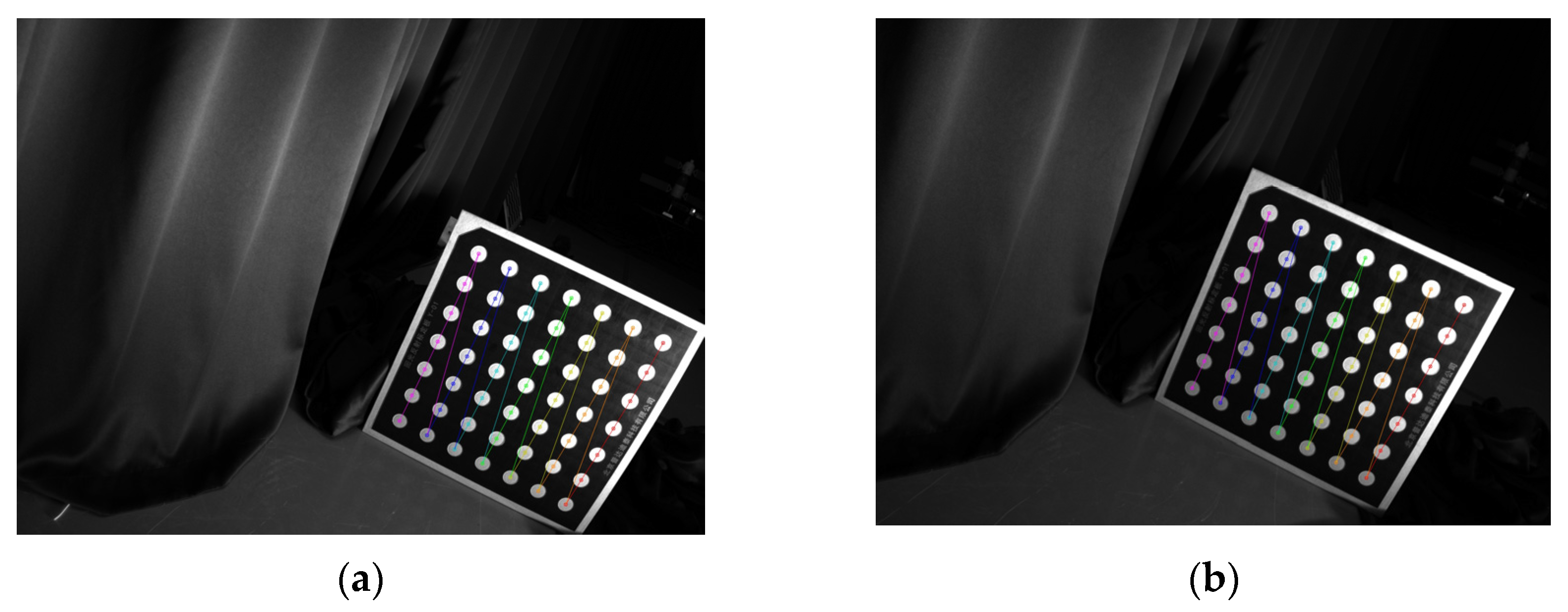
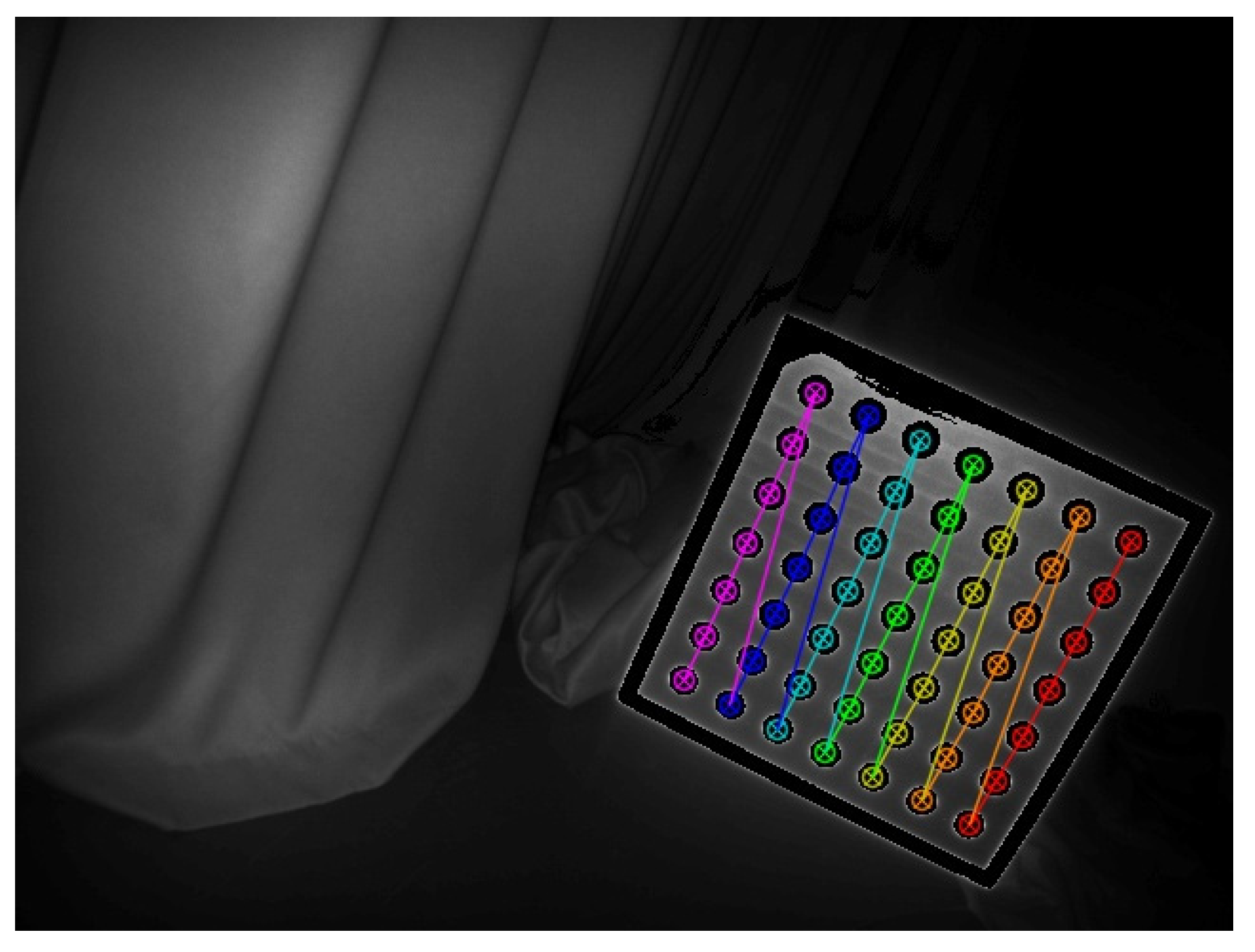
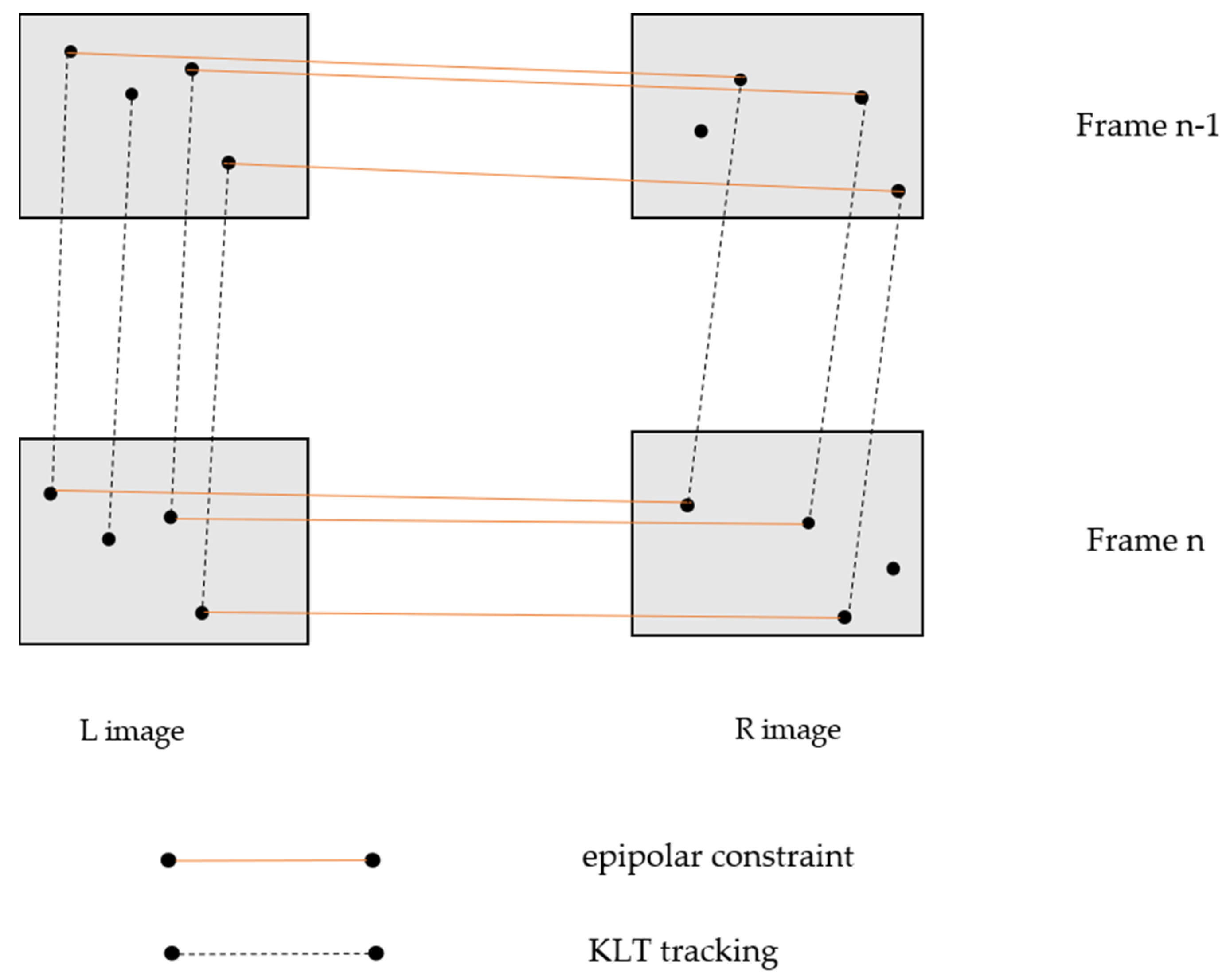


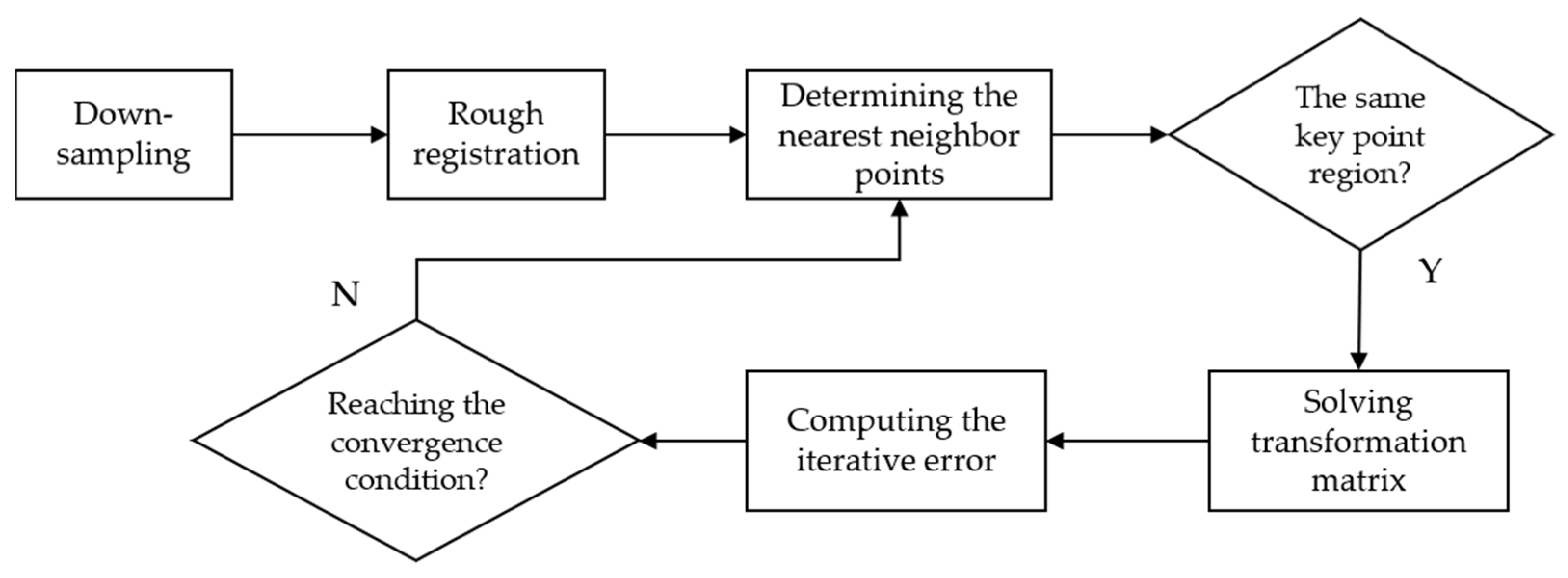
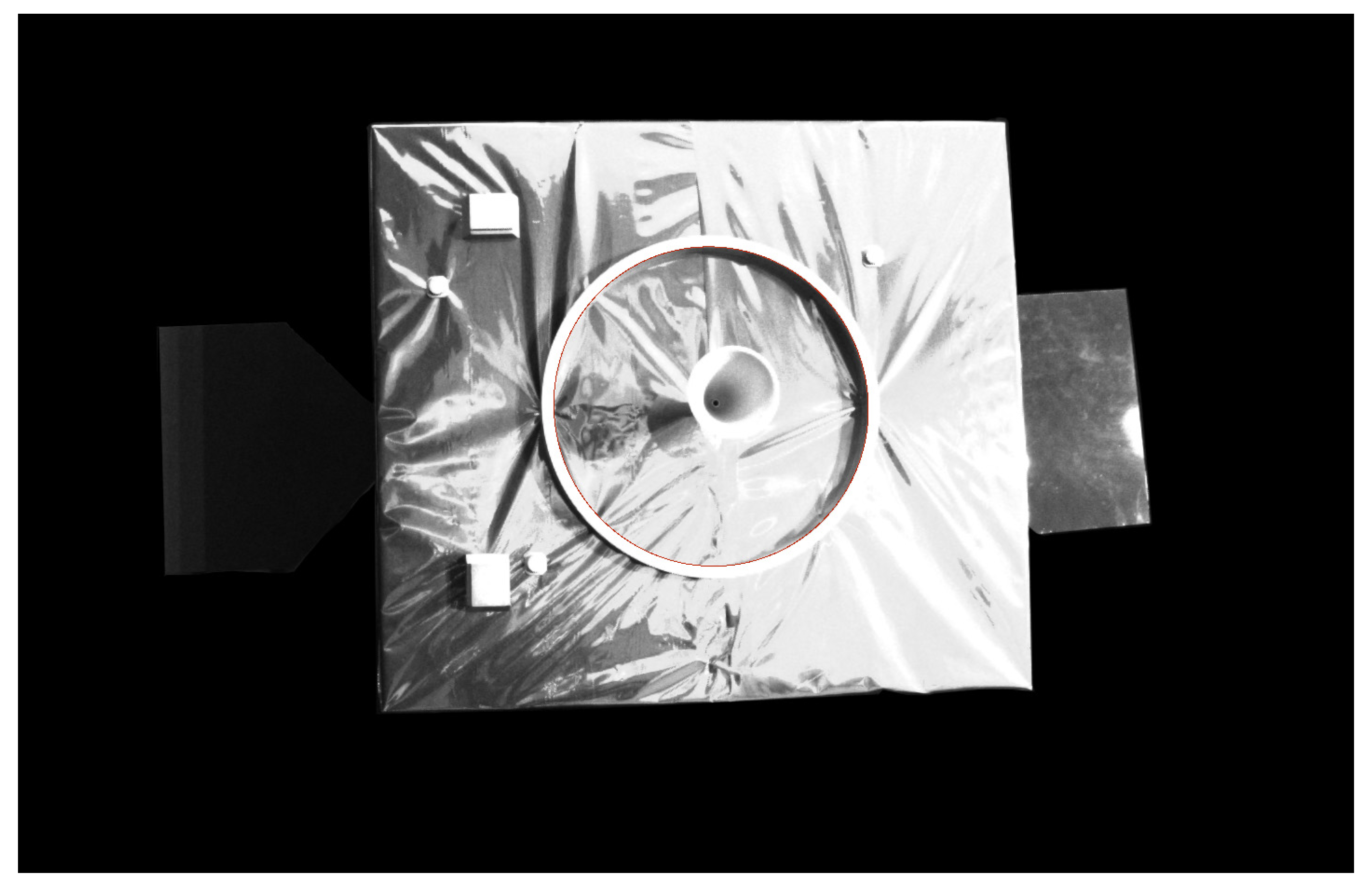
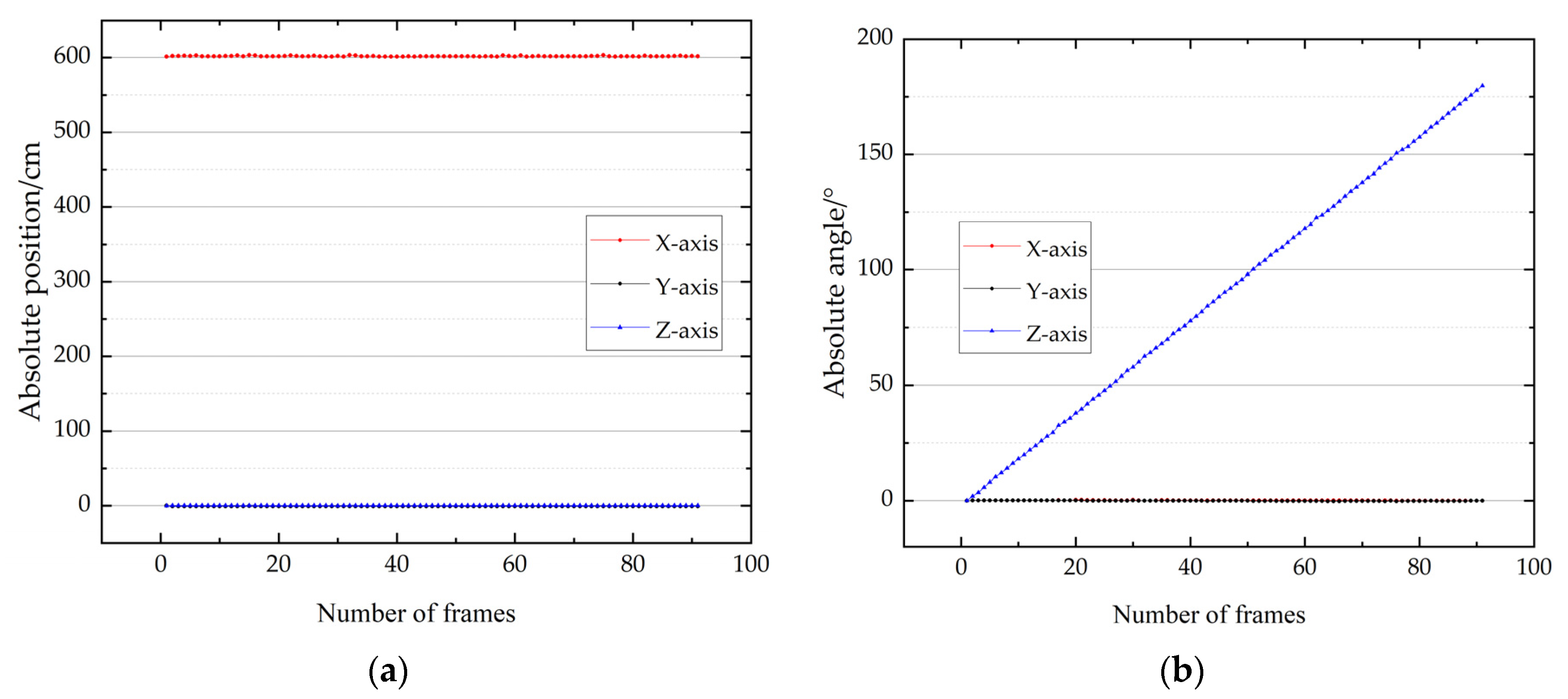
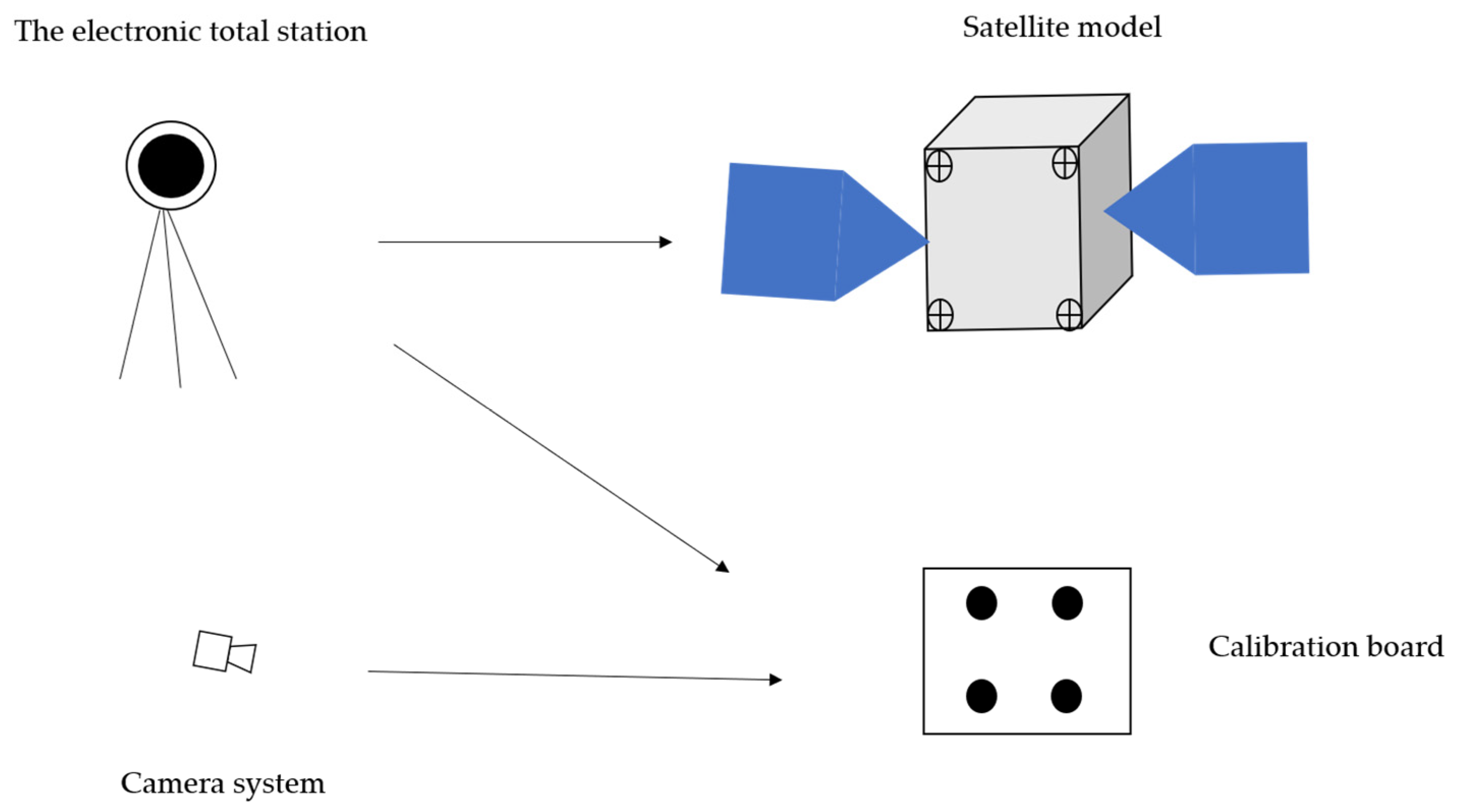


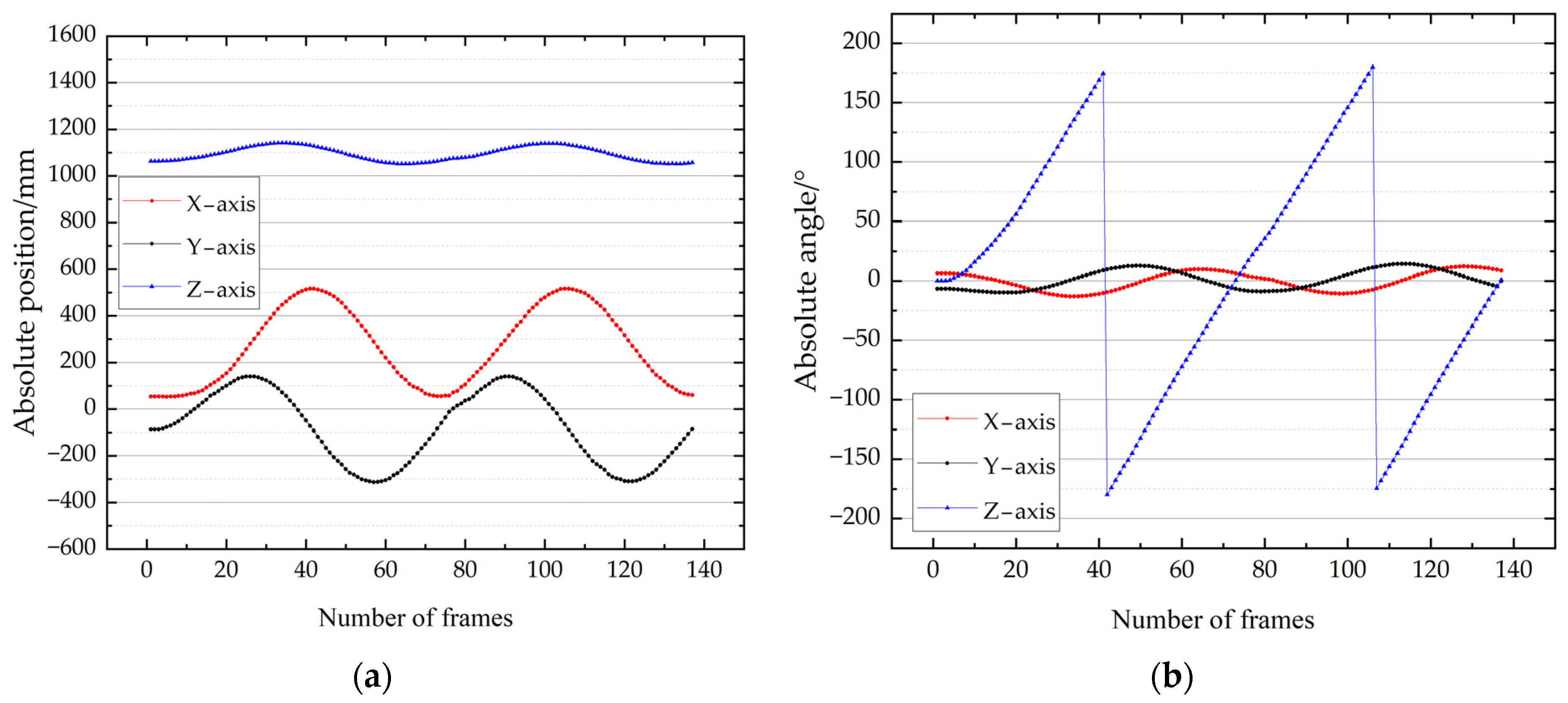

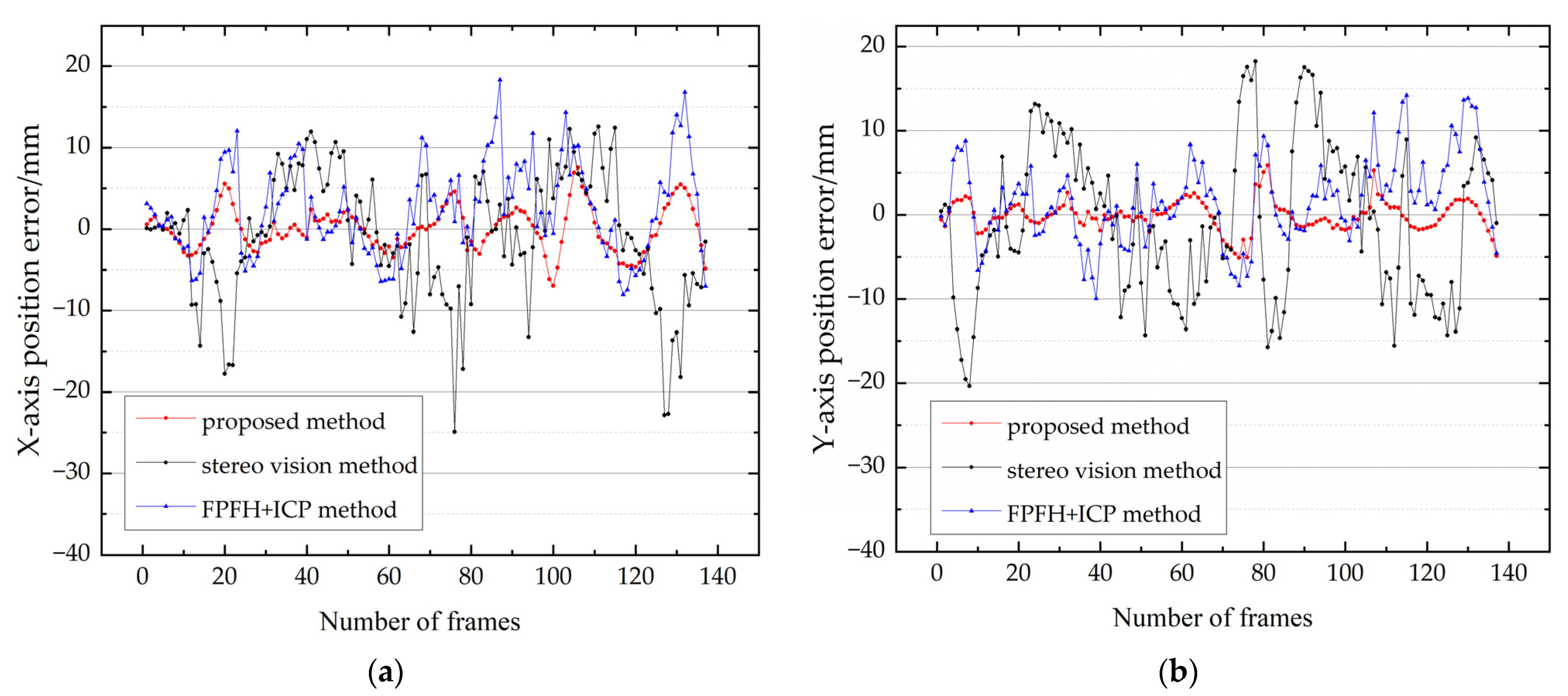
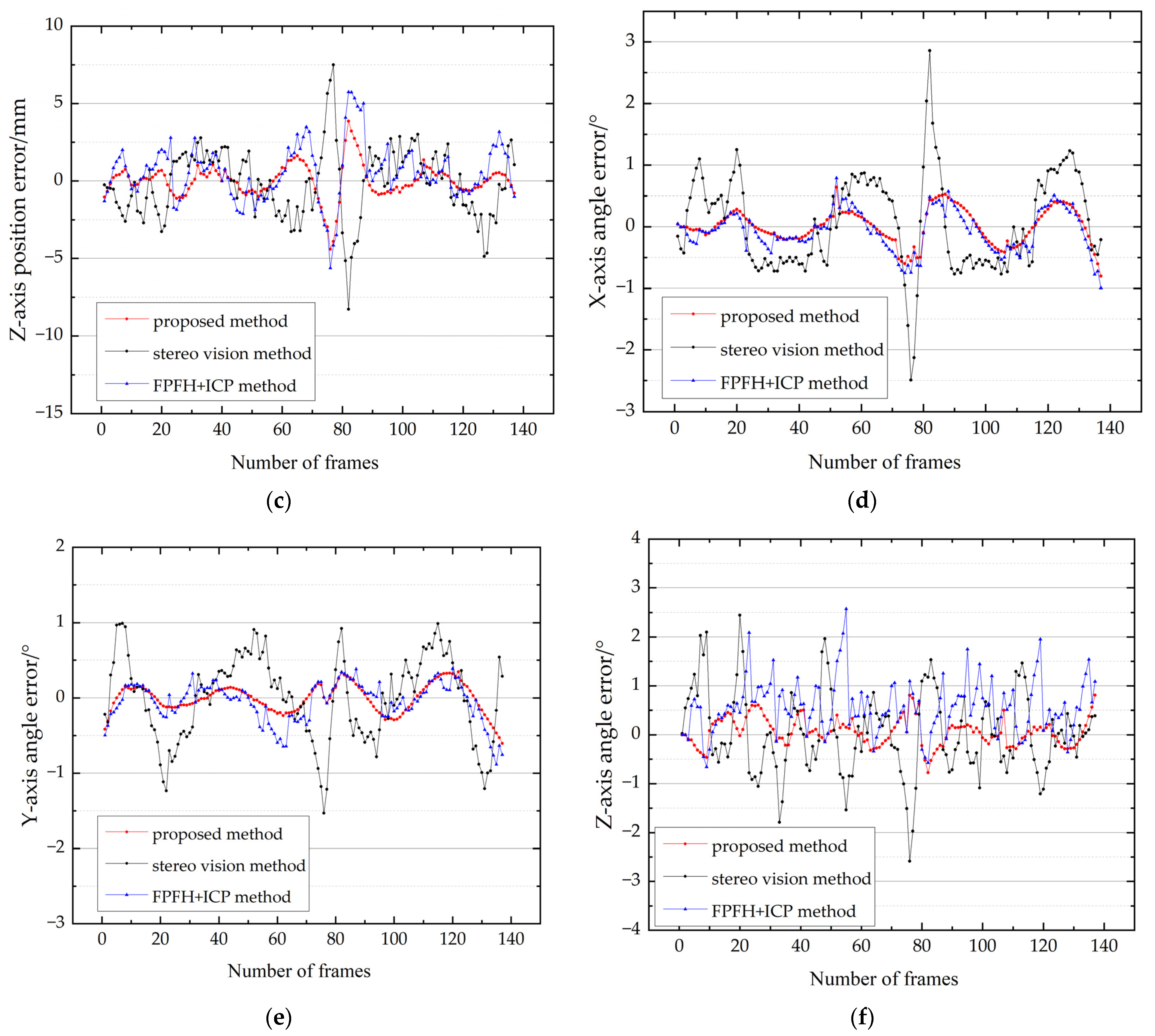

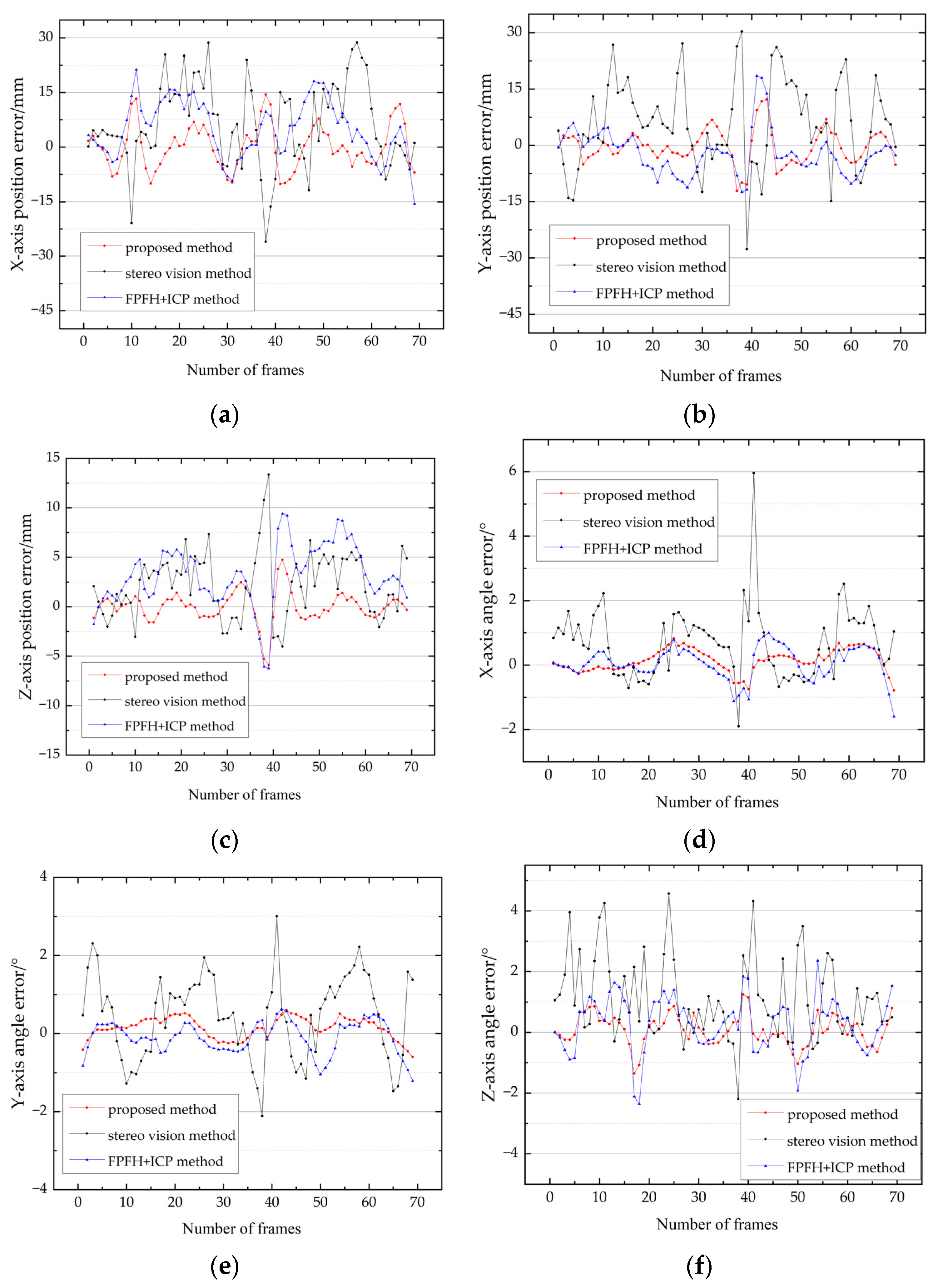
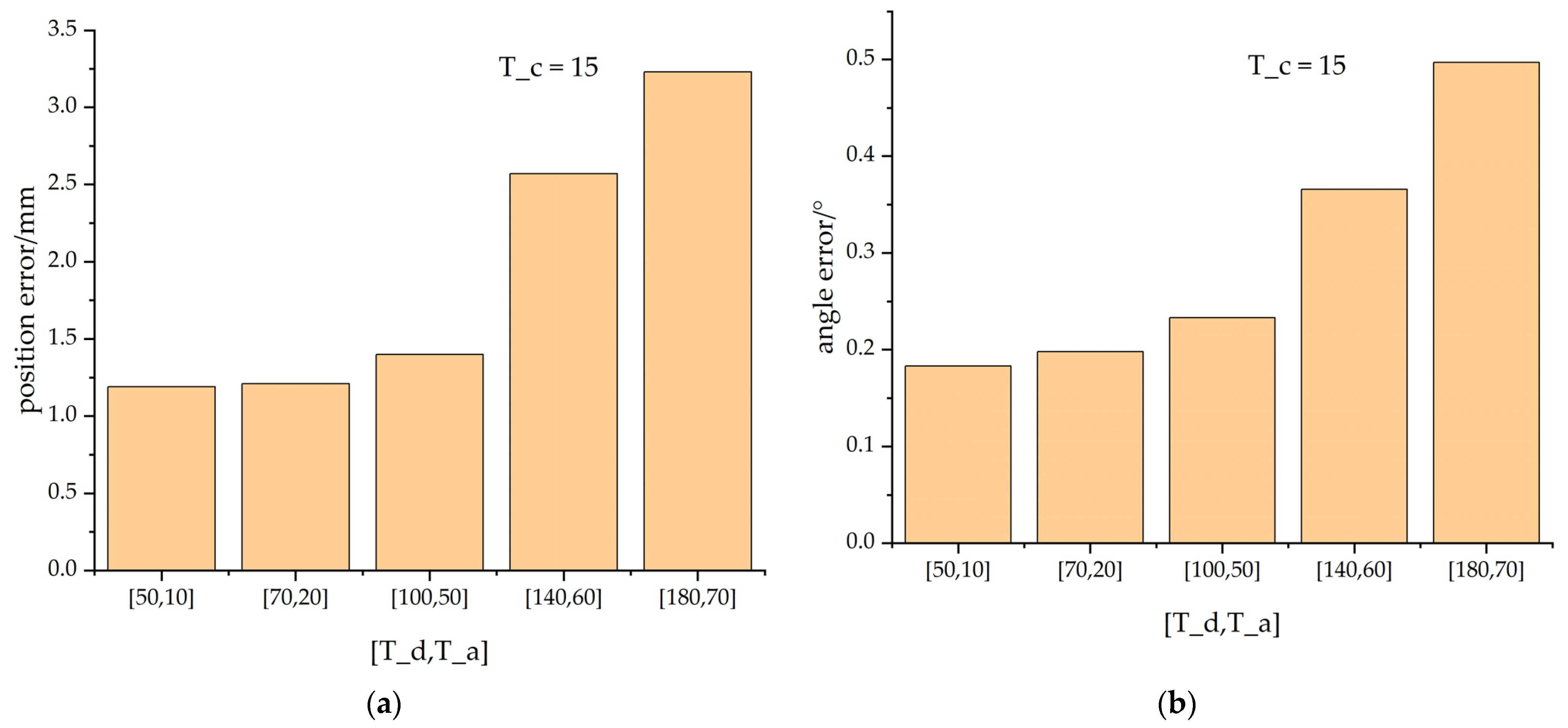
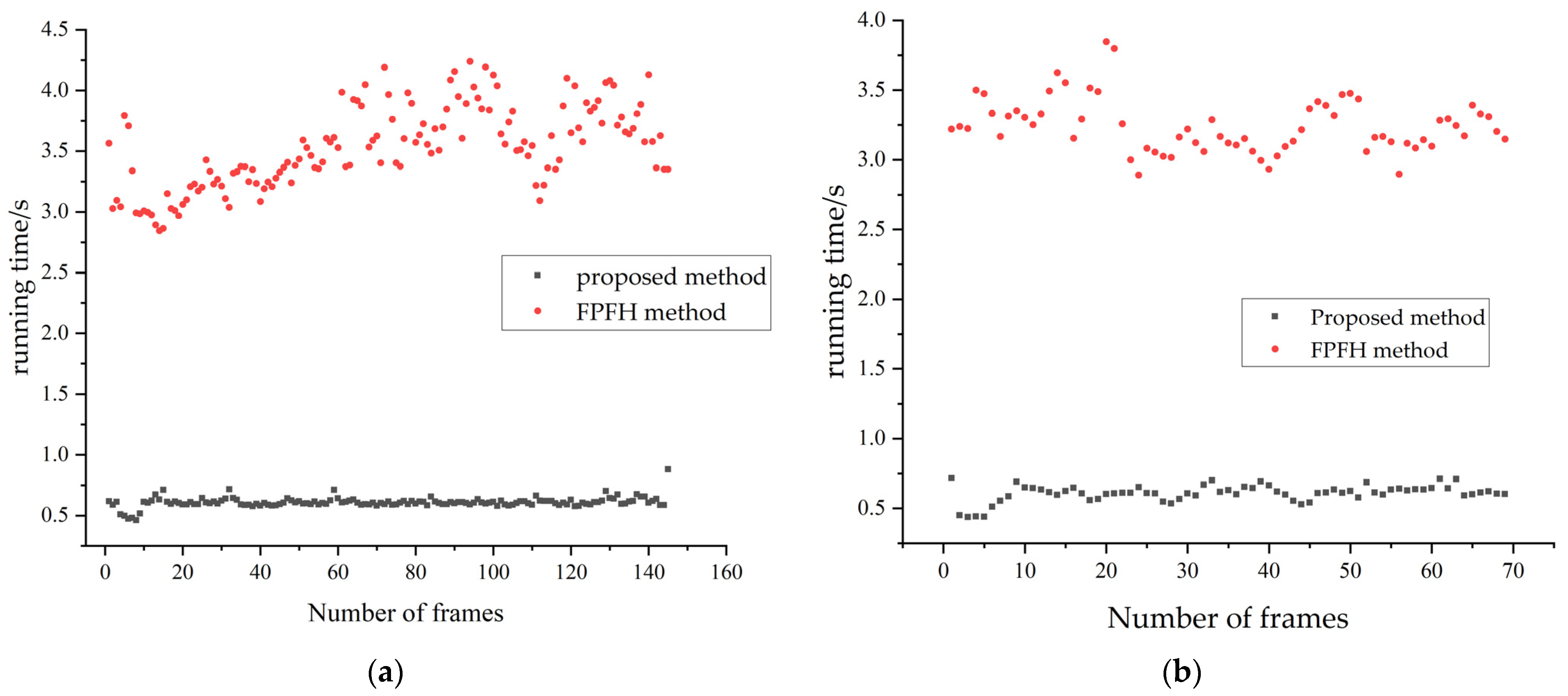
| Grayscale Camera | TOF Camera | |
|---|---|---|
| Sensor size | 2048 × 1536 (pixel) | 640 × 480 (pixel) |
| Pixel size | 3.45 μm | 10 μm |
| Field of view | 41 × 31 (°) | 69 × 51 (°) |
| Focal length | 12 mm | 8 mm |
| Circular Board | Checkerboard | |
|---|---|---|
| X-axis | 0.95 pixel | 1.78 pixels |
| Y-axis | 0.78 pixel | 1.71 pixels |
Disclaimer/Publisher’s Note: The statements, opinions and data contained in all publications are solely those of the individual author(s) and contributor(s) and not of MDPI and/or the editor(s). MDPI and/or the editor(s) disclaim responsibility for any injury to people or property resulting from any ideas, methods, instructions or products referred to in the content. |
© 2023 by the authors. Licensee MDPI, Basel, Switzerland. This article is an open access article distributed under the terms and conditions of the Creative Commons Attribution (CC BY) license (https://creativecommons.org/licenses/by/4.0/).
Share and Cite
Hu, L.; Sun, D.; Duan, H.; Shu, A.; Zhou, S.; Pei, H. Non-Cooperative Spacecraft Pose Measurement with Binocular Camera and TOF Camera Collaboration. Appl. Sci. 2023, 13, 1420. https://doi.org/10.3390/app13031420
Hu L, Sun D, Duan H, Shu A, Zhou S, Pei H. Non-Cooperative Spacecraft Pose Measurement with Binocular Camera and TOF Camera Collaboration. Applied Sciences. 2023; 13(3):1420. https://doi.org/10.3390/app13031420
Chicago/Turabian StyleHu, Liang, Dianqi Sun, Huixian Duan, An Shu, Shanshan Zhou, and Haodong Pei. 2023. "Non-Cooperative Spacecraft Pose Measurement with Binocular Camera and TOF Camera Collaboration" Applied Sciences 13, no. 3: 1420. https://doi.org/10.3390/app13031420
APA StyleHu, L., Sun, D., Duan, H., Shu, A., Zhou, S., & Pei, H. (2023). Non-Cooperative Spacecraft Pose Measurement with Binocular Camera and TOF Camera Collaboration. Applied Sciences, 13(3), 1420. https://doi.org/10.3390/app13031420





